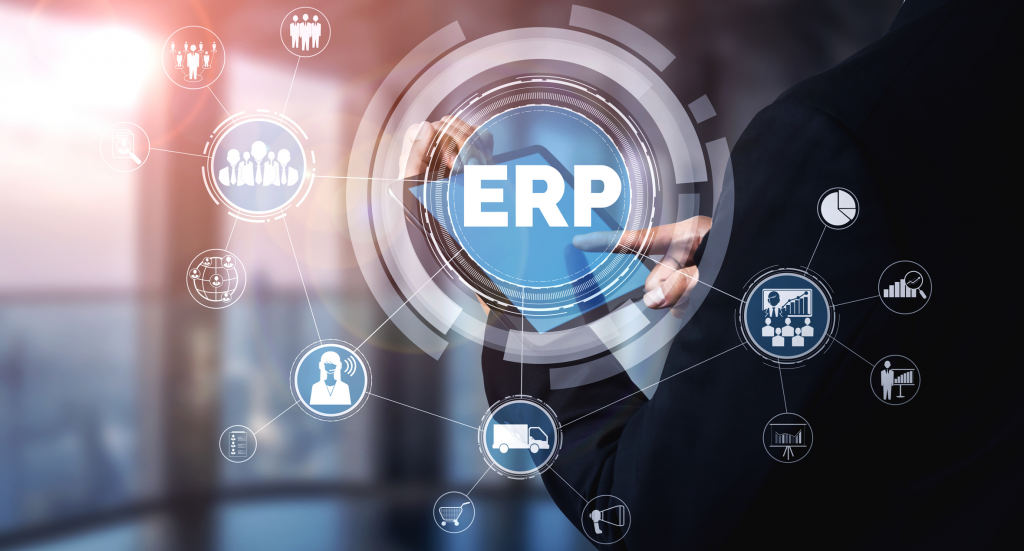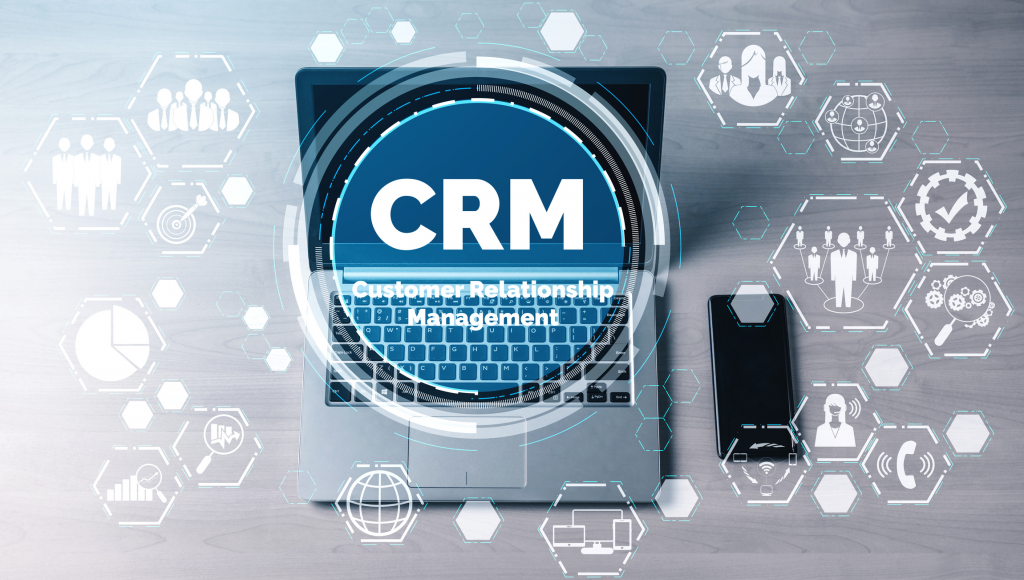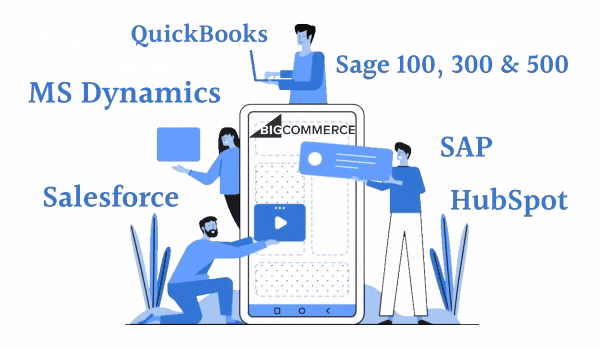What is eCommerce Integration?
E-commerce Integration is the action of synchronizing operations of an e-commerce website (online store) with an ERP / CRM or other business systems of a company.
Thus, the goal of e-commerce integration with Salesforce, JDE, SAP, or any other ERP / CRM is to create a unified information space, which is basically within the ERP/CRM in place at the company.
This means that both the ERP and the online store must contain consistent information (that is, the data of one system must not conflict with the data of another).
Therefore, the very first step in any integration project, is to define what data objects should be synchronized and what will remain outside the integration.
Best eCommerce Platforms to Build Your Store
It is not that difficult to start an online business. First, you need to select an e-commerce platform on which you will build an e-commerce website.
There are many e-commerce platforms to choose from, but whether you need an enterprise-level solution or a simple e-commerce website, here are the most popular e-commerce platforms that can meet all your needs:
If you want to learn more about eCommerce platform, read our popular article: E-commerce Integration with business systems – outperform the competition
What are The Most Popular ERP Systems?
ERP (Enterprise Resource Planning) is software for complete and efficient enterprise management.

According to research, companies from the Fortune 1000 and Global 2000 such as Walmart, Exxon Mobil, McKesson, General Motors, Costco Wholesale use SAP S/4 HANA. It is an ERP solution for large enterprises.
SAP S/4HANA is an ERP system that combines the functionality of on-premises software with cloud computing. It is often integrated with e-commerce platforms such as Magento to help companies run their online business more efficiently and profitably.
It should be noted that other SAP ERP solutions are no less popular, for example, SAP Business One designed for small and medium-sized enterprises.
The other popular ERP systems and leading vendors are:
- Oracle (Oracle JD Edwards EnterpriseOne, Oracle NetSuite ERP)
- Microsoft (Dynamics NAV, Dynamics AX, Dynamics 365)
- Sage Group (Sage X3, Sage 300)
Recognize warning signals: How urgent it is to integrate eCommerce with ERP?
The Best CRM Systems for Business
Customer relationship management (CRM) is software for managing interactions with customers and prospects.
As best practices show, CRM (Customer Relationship Management) systems are always among the key IT systems of companies.

The most popular CRM systems are:
As for the integration of e-commerce and business systems, today the most popular in terms of the number of requests is Salesforce Shopify integration. Of course, this is not surprising given the incredible popularity and availability of these two solutions for medium-sized businesses.
Integrating CRM with business software using Magic xpi
What Data Should Be Integrated With ERP/CRM?
To get the most out of e-commerce integration with ERP or CRM, you need to sync all important data.
Some of the information in your ERP/CRM and the online store is the same, however, they could be in different formats and structure in each system.
Typically, when integrating an e-commerce store with a business system, work is carried out with the following data:
– Product information (Item ID, description, dimensions (weight, length, height…))
– Inventory and price information
– Customer Information and history Sales Order Information
Thus, typically, through e-commerce integration companies seek to solve the following issues:
Synchronization of Stock Status
Typically this is one-way synchronization from CRM system (i.e. Salesforce) to e-commerce.
Below is our typical synchronization flow for the “stock status”.
- The Integration process starts runs every 6 hours.
- The integration flow connects to the CRM/ERP instance to read “stock status”.
- CRM/ERP should return the list of items, including their Stock available to sell.
- Once the data is extracted from CRM/ERP, it must be filtered, and the flow will update the necessary items in e-commerce.
Synchronization of Sales Orders
This is one-way synchronization from e-commerce to the business system (ERP/CRM)
Here are the steps for the Sales Orders synchronization flow:
- The integration process runs every 15 minutes.
- The integration process connects to the e-commerce instance to read and retrieve the list of orders created since the last call and not yet migrated to CRM / ERP.
- It brings those orders with their appropriate details
- Our flow converts these orders into a format ready for transfer to the CRM / ERP system.
- Orders will be submitted to the CRM/ERP system.
- An email will be triggered for a mailing list to advise about a new order(s) sent to the CRM/ERP.
Synchronization of Order Fulfillment
One way synchronization from ERP/CRM systems to e-commerce
Here are the steps of this flow:
- Upon fulfilling the order and shipping the order in CRM/ERP, the status of the order will change.
- Our integration process runs every 15 minutes.
- When it wakes up, it will do the following:
1. Extract the list of Orders that are originating from CRM/ERP that are not yet fulfilled
2. For each not fulfilled Order, it will check its status in CRM/ERP
3. If the order status in CRM/ERP is now fulfilled, it will extract the fulfillment necessary information and it will update the e-commerce instance.
4. It will also send an email to a mailing list, to advise about the fulfillment of the order in question.
Looking For the Best E-commerce Integration Solution?
If you need to integrate your online store, contact us, and get a free consultation with our integration expert.
Using advanced integration solutions and having more than 21 years of experience in the field of system integrations, we will quickly and reliably carry out an integration project of any complexity.
The following is a list of additional helpful information:
Must-Have Integration between E-Commerce and Business Systems
9 Major E-Commerce Trends That Will Help Grow Your Online Business
The main reasons why you need Microsoft Dynamics Integration with your Business Systems
Shopify and Microsoft Dynamics Nav Integration: Things you should know




